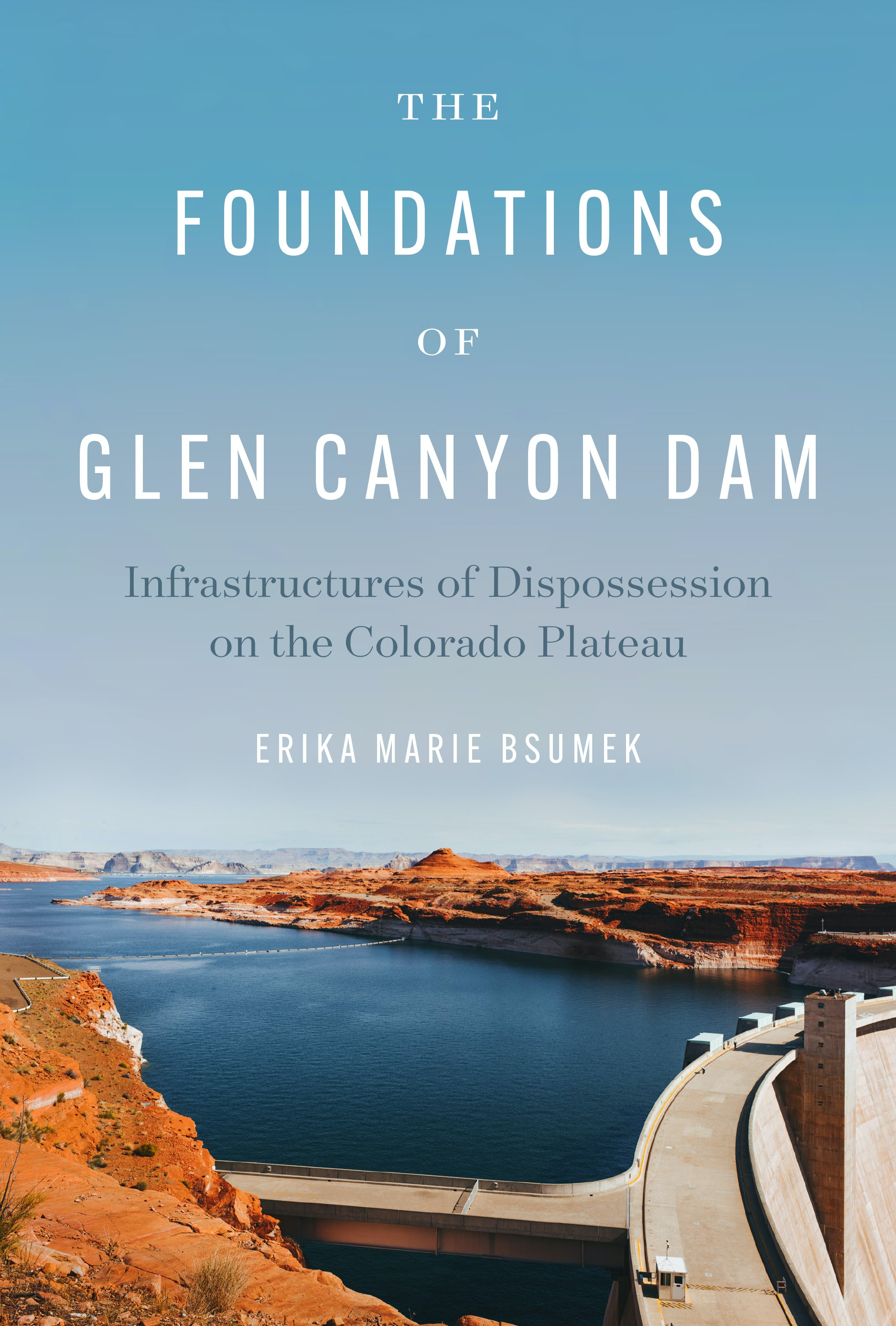Though it is less than 60 years old, the Glen Canyon Dam, near the Utah-Arizona border, is like a Church of the Holy Sepulchre for the Southwest, a contested edifice that inspires all kinds of veneration and lamentation.
There’s an established way to tell its story, with a focus on the rip-roaring environmentalists who challenged it and the agency heads who built it. But in her original new book, The Foundations of Glen Canyon Dam: Infrastructures of Dispossession on the Colorado Plateau (2023), Erika Marie Bsumek bypasses that potted history for a more startling intellectual account of the dam as an outgrowth of 19th-century Anglo visions of the desert—mainly represented by the Church of Jesus Christ of Latter-day Saints, also known as the Mormons—and their fatal clash with the agricultural practices of the Navajo, also known as the Diné people. The result is a wholly new look at one of the biggest engineering achievements of the 20th-century Southwest—and one of its biggest debacles.
TOM ZOELLNER: Why did you come at the story this way, bypassing the usual cast of bureaucrats and their environmentalist foes?
ERIKA MARIE BSUMEK:
I don’t think I bypass the usual players as much as I try to reconstruct the world that existed before their arrival on the scene in the 1950s. Most people who are even vaguely familiar with the history of the dam know a little about David Brower and Floyd Dominy or about the actions of men like Stewart Udall and Wayne Aspinall. But how many people know about the role Navajo leaders such as Sam Ahkeah, Paul Jones, or Raymond Nakai played in regional politics and infrastructural development? How many people know about their attempts to balance Navajo ideals and beliefs with the fact that residents on the reservation needed water, electricity, and financial stability? How many people realize that the Navajo Nation borders not just the dam but also almost 200 miles of Lake Powell’s shoreline? This book is my attempt to recenter the history of the dam and contextualize it in terms of the extensive development of the region’s complicated history.
